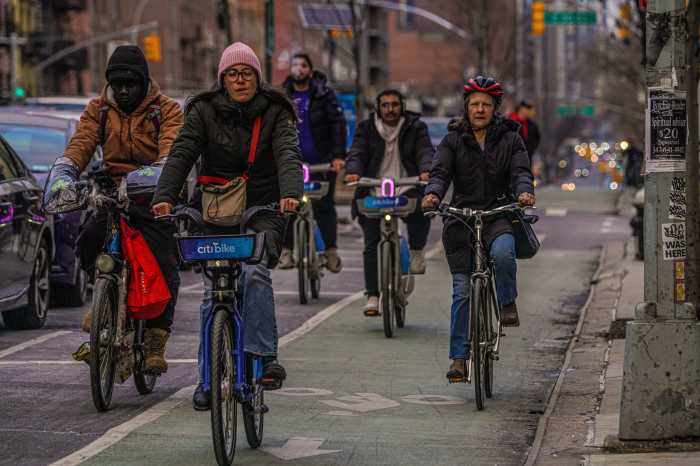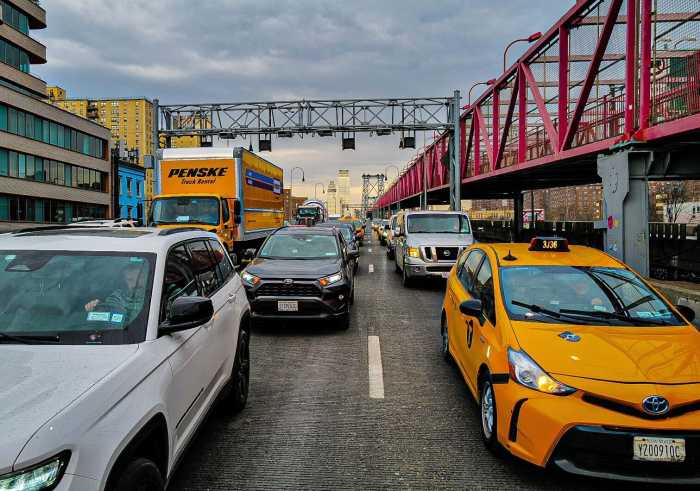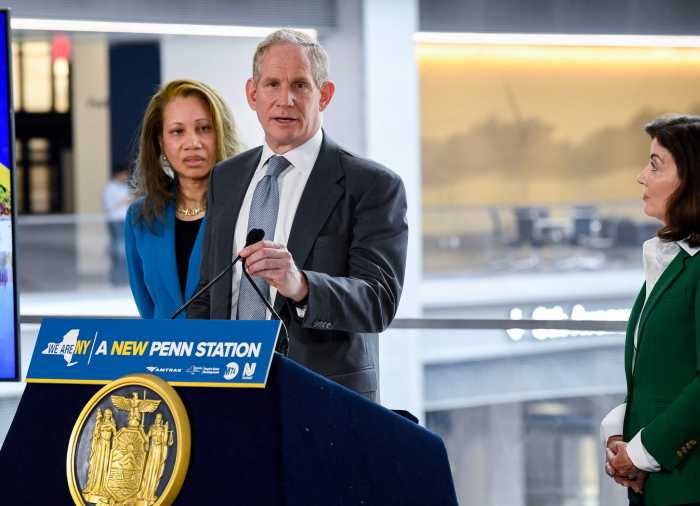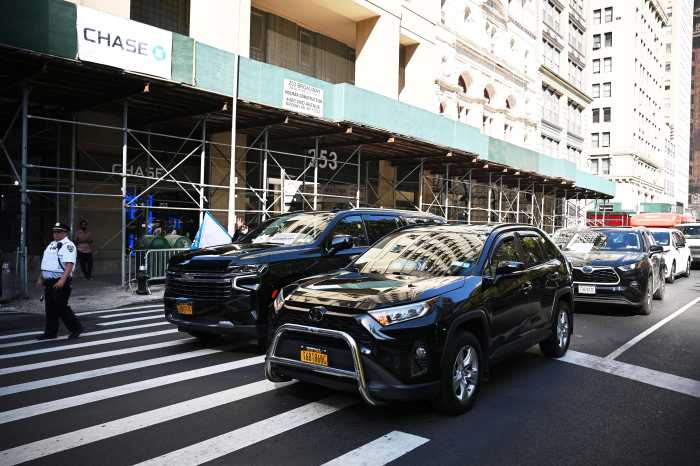
Following a recent increase in bicyclist fatalities and injuries, Mayor Bill de Blasio announced Thursday a new effort to both encourage biking and to build a safe cycling infrastructure in the city.
So far this year, there have been 17 cycling fatalities, up from 10 in all of 2018. In response to the deaths, and under criticism for failing bikers, the city will spend $58.4 million over the next five years on a "Green Wave" cycling plan, focused on new bike lanes, redesigned intersections and stepped-up enforcement.
De Blasio, speaking at a public school in Bay Ridge, described the state of cycling in the city as a "crisis" and "emergency."
"We can never look at such a moment like this and think we can do things the same way," he said.
The program adds 30 miles of protected bike lanes each year, up from a 20-mile average the past three years; redesigns 50 intersections to make cyclists more visible; and adjusts traffic signals so that traffic moving at 15 miles per hour can pass through several consecutive green lights.
The city has drafted a map of its planned new bicycle lanes, which will require removing parking spaces "in the thousands," according to Polly Trottenberg, the city’s Department of Transportation commissioner.
There will be a concerted effort to expand the bike lane network with traditional and protected lanes in 10 new "bike priority districts" of Brooklyn and Queens that are sparse on such infrastructure but experience large numbers of serious injuries and fatalities involving cyclists. Twelve of the cyclists who died this year were struck in Brooklyn.
The new districts include parts of Corona, East Elmhurst and Jackson Heights in Queens, and Bay Ridge, Midwood, Sheepshead Bay and Brownsville in Brooklyn.
About 490,000 daily cycling trips are taken in New York City, according to the most recent city data, from 2017. Across the five boroughs, an average of about 0.98 percent of commutes were completed by bicycle that year, according to U.S. Census data. Ultimately, the city hopes 10 percent of all trips taken in New York City are made by bicycle by 2050.
The plan underwhelmed some advocates and elected officials, who believe de Blasio is not doing enough to promote alternative transportation to cars, like buses or bikes, or to crack down on dangerous driving behavior. More commuters have abandoned mass transit as per-capita car ownership increases and the app-based e-hail industry has exploded, bringing tens of thousands more professionally licensed vehicles onto city streets.
"We must break car culture to protect cyclists in NYC," Brooklyn Councilman Antonio Reynoso said Thursday on Twitter. "[De Blasio’s] new bike plan — largely an expansion & acceleration of Vision Zero — falls short. Reckless drivers will continue to terrorize our streets until there’s a culture shift to prioritize pedestrians & cyclists."
But Transportation Alternatives, a leading advocacy group for cycling, supported the mayor for finally taking a step forward.
"We’re hopeful that this plan will get Vision Zero back on track and help alleviate the anxiety that comes with riding a bike lately in the five boroughs," said Marco Conner, deputy director at Transportation Alternatives. "And where more needs to be done to make New York City streets safe, we will continue to push at all levels of government."
The plan also comes with several policy commitments, including one to create new rules to encourage cargo bikes for commercial deliveries.
The de Blasio administration is also pledging to work with the City Council to expedite the community board process around bike lanes — specifically to eliminate waiting periods that must follow board presentations, which contribute to "monthslong delays" in construction, according to the city.

Council Speaker Corey Johnson appeared open to working with the administration. He said he supports the efforts, but will still push his bill to create five-year master plans for city streets.
“I thank Mayor de Blasio for listening to our voices on this and putting out a plan that recognizes that our streets are in crisis," Johnson said in a statement. "This is a major step forward as we work to become a more livable city where everyone has equal access to clean, safe, and efficient transportation options."
De Blasio still believes community boards should have a role in bike lane development and, when asked about fights over parking spaces that tend to arise, said safety would go first — though he didn’t fully commit to usurping opposing boards.
The mayor also continued to endorse his police crackdown on low-wage delivery workers — a large percentage of city cyclists — who he believes to be operating dangerous illegal e-bikes, even though data say otherwise.
“The mayor should focus on making streets truly safe for the city’s immigrant workers," said Do Lee, of the Biking Public Project. "We need real solutions that address street safety issues that face all cyclists, including delivery workers who die and are constantly put in danger from overpolicing and the city’s negligence.”



































